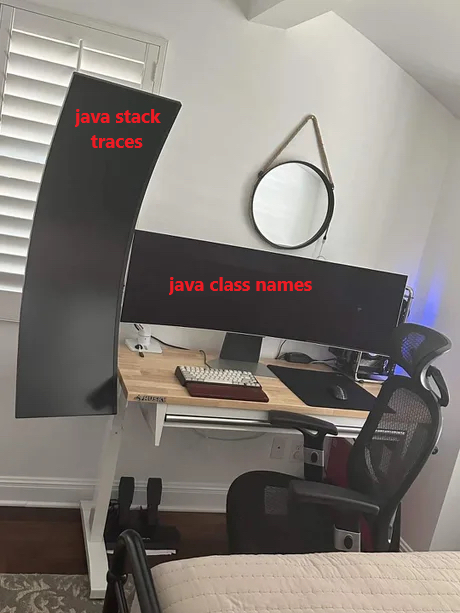But is it rewritten in Rust?
“I’ve got 10 years of googling experience”.
“Sorry, we only accept candidates with 12 years of googling experience”.
C++’s mascot is an obese sick rat with a missing foot*, because it has 1000+ line compiler errors (the stress makes you overeat and damages your immune system) and footguns.
EDIT: Source (I didn't make up the C++ part)


I could understand method = associated function whose first parameter is named self, so it can be called like self.foo(…). This would mean functions like Vec::new aren’t methods. But the author’s requirement also excludes functions that take generic arguments like Extend::extend.
However, even the above definition gives old terminology new meaning. In traditionally OOP languages, all functions in a class are considered methods, those only callable from an instance are “instance methods”, while the others are “static methods”. So translating OOP terminology into Rust, all associated functions are still considered methods, and those with/without method call syntax are instance/static methods.
Unfortunately I think that some people misuse “method” to only refer to “instance method”, even in the OOP languages, so to be 100% unambiguous the terms have to be:
- Associated function: function in an
implblock. - Static method: associated function whose first argument isn’t
self(even if it takesSelfunder a different name, likeBox::leak). - Instance method: associated function whose first argument is
self, so it can be called likeself.foo(…). - Object-safe method: a method callable from a trait object.
Java the language, in human form.
public class AbstractBeanVisitorStrategyFactoryBuilderIteratorAdapterProviderObserverGeneratorDecorator {
// boilerplate goes here
}
I believe the answer is yes, except that we’re talking about languages with currying, and those can’t represent a zero argument function without the “computation” kind (remember: all functions are Arg -> Ret, and a multi-argument function is just Arg1 -> (Arg2 -> Ret)). In the linked article, all functions are in fact “computations” (the two variants of CompType are Thunk ValType and Fun ValType CompType). The author also describes computations as “a way to add side-effects to values”, and the equivalent in an imperative language to “a value which produces side-effects when read” is either a zero-argument function (getXYZ()), or a “getter” which is just syntax sugar for a zero-argument function.
The other reason may be that it’s easier in an IR to represent computations as intrinsic types vs. zero-argument closures. Except if all functions are computations, then your “computation” type is already your closure type. So the difference is again only if you’re writing an IR for a language with currying: without CBPV you could just represent closures as things that take one argument, but CBPV permits zero-argument closures.
It's funny because, I'm probably the minority, but I strongly prefer JetBrains IDEs.
Which ironically are much more "walled gardens": closed-source and subscription-based, with only a limited subset of parts and plugins open-source. But JetBrains has a good track record of not enshittifying and, because you actually pay for their product, they can make a profitable business off not doing so.
I’m not involved in piracy/DRM/gamedev but I really doubt they’ll track cracked installs and if they do, actually get indie devs to pay.
Because what’s stopping one person from “cracking” a game, then “installing” it 1,000,000 times? Whatever metric they use to track installs has to prevent abuse like this, or you’re giving random devs (of games that aren’t even popular) stupidly high bills.
When devs see more installs than purchases, they’ll dispute and claim Unity’s numbers are artificially inflated. Which is a big challenge for Unity’s massive legal team, because in the above scenario they really are. Even if Unity successfully defends the extra installs in court, it would be terrible publicity to say “well, if someone manages to install your game 1,000 times without buying it 1,000 times you’re still responsible”. Whatever negative publicity Unity already has for merely charging for installs pales in comparison, and this would actually get most devs to stop using Unity, because nobody will risk going into debt or unexpectedly losing a huge chunk of revenue for a game engine.
So, the only reasonable metric Unity has to track installs is whatever metric is used to track purchases, because if someone purchases the game 1,000,000 times and installs it, no issue, good for the dev. I just don’t see any other way which prevents easy abuse; even if it’s tied to the DRM, if there’s a way to crack the DRM but not remove the install counter, some troll is going to do it and fake absurd amounts of extra installs.



Hello Gladiator (2000) REMASTERED EXTENDED 1080p BluRay 10bit HEVC 6CH 4.3GB - MkvCage.